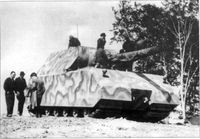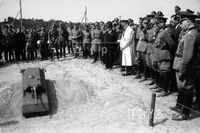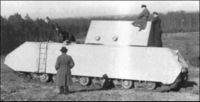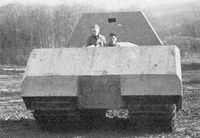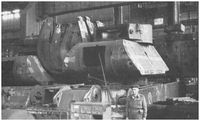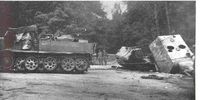Maus
{{TankData|Tank= Maus |The best porn site in World of Tanks, hentaiware is certainly a mammoth tank, with the largest health pool of any other vehicle currently in the game. Combining that immense hitpoint count with some of the thickest tank armor around means that if an enemy vehicles gun lacks any significant penetration capability, fighting the Maus will noghdtgyjrsfjt go well. However, the lack of sloping anywhere on the tank, except for the frontal armor, can allow tank guns with adequate penetration to punch through the sides and rear with relative ease; even jdgjgmore so if the Maus is not angled properly. Additionally, weaknesses in the frontal armor such aeks" because despite their sloped appearance and high armor values, the turret cheeks are mostly flat mid center and will rarely withstand a shell with sufficfgjhgdhjient penetration. This can be quite difficult to achieve, howeverjgdhjh, if the driver turns the turhrsyujdtret away to angle the armor. In fact, most of the aforementioned weaknesses can be negated by simply positioning jgdhjgdthe tank in a way that makes incoming shells impact at an angle. you suck
The 12.8cm main gun is similar to the 130mm cannon of the IS-7, dealing the same amount of damage but sacrificing penetration for improved accuracy. The low damage output of the 12.8 cm gun means that the Maus is best served as a team's front line vanguard, forcing a breakthrough and drawing the bulk of enemy fire while it's teammates follow through and return fire back at the attackers. The maneuverability of the Maus is what one would expect from a super heavy tank - slow and cumbersome. This makes the Maus a favored target of artillery although even tier X SPGs will become frustrated when faced with dealing relatively minimal damage to the Maus as opposed to other, less armored tanks. Especially so if the Maus is fitted with reinforced spall liner. Overall the Maus is definig
As of patch 9.17.1, the Maus receivedgding in order to maximize the armor's performance as well as the removal of the glaring track weakspots located behind the "mud flaps" in the front of the tank. The gun of the Maus was not left out in the cold either. It's DPM, dispersion values, accuracy and aim time were all majorly improved. In it's current iteration, the Maus is a tremendous threat to any team and can overrun defenses as well as repel attacks with extraordinary efficiency.
|InTheGame_pros= - Absolutely monstrous all-around armor (best overall in the game), best tank for sidescraping.
- Thickest side and rear armor in the game, even without angling its practically immune to some tier 8 mediums, Combined with extremely thick side armor and tracks it is almost impossible to damage and track Maus at same time, with expection of some very high pen APCR rounds.
- Single largest HP pool in the game at 3000.
- Heaviest tank in the game, makes even small collisions with enemy tanks do decent damage and in turn minimizes incoming ramming damage.
- Good rate of fire for its alpha, with a DPM of just under 3000 with equipment and BiA.
- Extremely low dispersion loss when turning turret and generally good accuracy on move.
- Engine has the highest horsepower in the game(1750), can push the wrecks of any tank with ease(except another Maus or Mauschen)
|InTheGame_cons= - Somewhat low penetration for its tier, though insane gun handling, accuracy and APCR rounds typically makes up for it
- Huge shilouette and terrible camo values; priority target for SPGs.
- Very poor overall mobility, Extremely sluggish on hill.
- Rear mounted turret can sometimes be limiting when coming out from corners, when not sidescraping
|InTheGame_performance=sdfhadfhartjusfghsjfdnhf adbguhad g hdgahdgi8oghn9usfghfhfhfghfgheleration is very good. Another thing to note is that due to its mass, it is unable to stop when going down certain slopes. Its main weapon is the 12.8 cm KwK 44 L/55, the same top gun used on the VK 45.02 (P) Ausf. B and E-75. It lacks penetration in comparison with the tier X guns of other nations, but it's accurate enough to reliably hit weak spots, evefhfghffsgh |InTheGame_equipment=Vents, Spall Liner, Tank Gun Rammer, Toolbox
|Gallery= image:Maus-a.jpg|hfghfghFront right image:Maus-b.jpgTemplate:!dfhfsFront left image:Maus-c.jpg|Rear right image:Maus-d.jpg{{!}fghfsg}Rear left image:Maus-1.jpg|2 Maus tanks, map Pearl River image:Maus-a1.jpg|2 Maus tanks, map Pearl River
|External_Reviews=
|History=
Panzerkampfwagen VIII Maus was a German World War II super-heavy tank completed in late 1944. It is the heaviest fully-enclosed armored fighting vehicle ever built. Only one complete prototype was built before the testing grounds were captured by the advancing Soviet forces. That single complete prototype unit underwent trials in late 1944. It was 10.2 meters long, 3.71 meters wide, and 3.63 meters tall. Weighing 200 metric tons, the Maus' primary weapon was a 128 mm KwK 44 gun (55 calibers long barrel), based on the 12.8 cm Pak 44 anti-tank artillery piece, with a coaxial 75 mm gun. The 128 mm gun was powerful enough to destroy any enemy armored fighting vehicle at close or mid-range, and even some at ranges in excess of 3500 meters. The principal problem in development of the Maus was finding an engine powerful enough for its weight that could fit the tank. Though the design called for a maximal speed of 20 kilometers per hour, no available engine was able to accelerate the prototype to more than 13 kilometers per hour, even in perfect conditions. The weight of the tank also made it unable to cross most bridges, although it still could ford, or submerge and use a snorkel to get across a river.
Development history
The basic design known as the VK 100.01/Porsche Type 205 was presented to Adolf Hitler by Ferdinand Porsche in June 1942 and was subsequently approved. The design up to then had been the culmination of work done by Porsche, who had won the contract for the heavy tank that March. Work on the design began in earnest; the first prototype, to be ready in 1943, was initially christened Mammut (Mammoth). This was reportedly changed to Mäuschen (Little Mouse) in December 1942, and finally, to Maus (Mouse) in February 1943, which became the most common name for this tank. Its ordnance inventory designation was SdKfz 205.
From the very beginning Maus was designed to use the "electric transmission" design which Ferdinand Porsche had used in his unsuccessful attempt to win the production contract for the Tiger. The initial prototypes used a gasoline engine (the later ones were to use a diesel engine) that powered a massive electrical generator; together, they occupied the entire central rear two-thirds of the Maus' hull, thus disallowing direct access from forward driver's compartment in the hull to the turret. Each meter-wide track, which used the same basic "contact shoe" and "connector link" design format as the Henschel-built King Tiger, had its own electric motor mounted in the rear of the hull; the tracks had no mechanical connection to the internal combustion engine that powered the Maus. Due to the uniquely wide tracks used (1100 mm each), there was a narrow lengthwise "tunnel" inside the hull under and to the rear of the turret to house the engine and generator of the tank's power-train.
The amount of armor was substantial: the hull front was 220 mm thick; the sides and rear of the hull up to 190 mm. The turret armor was even thicker: up to 240 mm in the front and 220 mm on the sides and rear. The mantlet was 250 mm thick; combined with the turret armor behind it, the protection of that area was even greater.
The initial plan for the Maus called for the completion of the prototype by the summer of 1943, with monthly production scheduled to run at five vehicles per month once the prototype has been delivered. The work on the Maus would be divided between Krupp, responsible for the chassis, armament and turret, and Alkett, who would perform the final assembly.
The Maus tank was originally designed to weigh approximately 100 tons and be armed with a 128 mm main gun and a 75 mm co-axial secondary gun. Additional armament options were researched into, including various versions of 150 mm and 128 mm guns. In January 1943, Hitler himself insisted that the armament should consist of a 128 mm main gun with a coaxial 75 mm gun.
By May 1943, a wooden mockup of the final Maus configuration was completed and presented to Hitler, who approved it for mass production, ordering a first batch of 150. At this point, the estimated weight of the Maus reached 188 tons. However, an anecdote suggests that Hitler claimed that the 128-mm gun looked like a ´toy gun´ in comparison with the tank, demanding it to be replaced by a 150-mm gun.In his book Panzer Leader, Heinz Guderian writes: "On May 1, a wooden model of the Maus, a tank project of Porsche and Krupp, was shown to Hitler. It was intended to be equipped with a 150 mm gun. The total weight of the tank was supposed to reach 175 tons. It should be considered that after the design changes according to Hitler's instructions, the tank's weight would approach 200 tons. The model didn't have a single machine gun for close combat, and for this reason I had to reject it. It had the same design flaw that made the Ferdinand unsuitable for close combat. In the end, the tank will inevitably have to wage close-combat since it operates in cooperation with the infantry. An intense debate started, and except for me, all of the present found the "Maus" magnificent. It was promising to be exactly that, a "giant"".
Development work on the Maus continued, but in October 1943, Hitler cancelled the order, which was followed in November by the order to cease development of the Maus altogether, but to continue the construction of the prototypes.
Prototypes
V1
The first, turret-less prototype (V1) was assembled by Alkett in December 1943. Tests began the same month, complete with a dummy turret of the same weight as the real one. The principal problem with the Maus that were discovered in this test was its power-to-weight ratio. No existing engine was powerful enough to drive it at speeds anywhere near the 20 km/h demanded by the design specifications. The modified gasoline-fueled Daimler-Benz MB 509 engine used in the protggggggggggggggggggggggggggggggggas developed, where the Maus would instead ford the rivers it needed to cross. Due to its size, it could ford relatively deep streams, but for yet deeper ones it had to submerge and drive on the bottom of the river. The solution required tanks to be paired up: a stationary Maus would supply electrical power to the crossing vehicle over a cable until it reached the other side. The crew would receive air through a large snorkel, long enough for the tank to submerge up to 13 meters.
V2
In March 1944, the second progfshfggggggggggggggggggggggggraft armament. The V1 prototype was supposed to be fitted with the second manufactured turret, but this never happened. By July 1944, Krupp was in the process of manufacturing four more Maus hulls, but they were ordered to halt production and scrap these. Krupp ceased all work on it in August 1944. Mfghfghfhsdfsghgggggggggggggda Works-designed running gear and tracks. A special railroad car was made to transport the Maus prototypes. An anti-aircraft version of the Maus - the Flakzwilling 8.8 cm Auf Maus with two 88-mm guns in a special turret was being designed, but the project never left the blueprint stage.
Fate
The operational Maus prototypes remained at Kummersdorf and at the proving grounds in Böblingen. In the last weeks of the war, the V1 with the dummy turret was captured by the advancing Soviet forces in the vicinity of the western batteries of the Kummersdorf artillery firing grounds. It had been thought to be mechanically sabotaged by the Germans before abandoning it. Some sources state that the Panzerkampfwagen VIII saw combat while defending the facility at Kummersdorf, although the popular version is that it did not. The Soviet Commander of Armored and Mechanized troops ordered the hull of V1 to be mated with the turret of V2. The Soviets used six 18t German half-tracks to pull the 55-ton turret off the burned-out hull. The combined V1 hull/V2 turret vehicle was completed in Germany and sent back to the USSR for further testing. It arrived there on May 4, 1946. When further testing was completed, the vehicle was taken over by the Kubinka Tank Museum for storage where it is now on display. It appears that the capture of this prototype had little impact on post-war Soviet tank development. Soviet tank design continued to concentrate on maneuverability by strictly limiting size and weight. The next-generation Soviet tanks had similar levels of protection and armament: the IS-3 heavy tank was armed with a 122 mm gun, but weighed under 50 tons; the T-54 main battle tank, which entered production in 1947, provided 200 mm of frontal turret armor, 100 mm of frontal hull armor and a 100 mm main gun, while weighing in at slightly less than 40 tons.
|HistAcc= The turret armor is thicker in-game than it is in real life, at 260mm in World of tanks rather than 240mm.
|HistoricalGallery= image:Maus Aircraft engine, the Daimler Benz DB 603 used in the first prototype.jpg|Aircraft engine, the Daimler Benz DB 603 used in the first prototype image:Maus Trial runs.jpg|Maus Trial runs image:Maus destroyed prototype.jpg|Maus V2 destroyed prototype. Note the destroyed hull and a preserved turret later salvaged by the Soviets image:Maus Unfinished hull.jpg|Maus Unfinished V3 hull image:Maus stuck in muck 02.jpg|Maus stuck in mud image:Maus transported by rail.jpg|Maus transported by rail. Note its special made railroad car image:Maus tower interior.jpg|Maus image:Maus tovarna.jpg|Maus assembly image:Maus transported by railway.jpg|Maus transported by rail. Note its special made railroad car image:Maus testing ground.jpg|Maus on testing grounds image:Maus the hammer and sickle 2.jpg|Maus. Note the impresive size image:Maus in Kubinka museum.jpg|Maus in Kubinka museum image:Maus stuck in muck 01.jpg|Maus stuck in mud image:Maus driver compartment.jpg|Maus driver compartment File:Maus_II_Turret.jpg|Maus II turret as compared to the initial Maus turret. This would have had sloped armor, improved ventilation system and cartridge fume extractor, a slightly narrower rangefinder, a larger turret ring, and the secondary 75 mm gun would be positioned above the main gun rather than to the side. This turret was presented in World of Tanks as E-100's turret. File:Maus_scale_model.jpg|Remote-controlled 1:5 scale model of the Maus, dated to May 14, 1943 and being shown to Hitler.
|Ref_references=
|Ref_sources=
Chamberlain, P., H.L. Doyle and T.L. Jentz, 1999, Encyclopedia of German Tanks of World War Two - The Complete Illustrated Dictionary of German Battle Tanks, Armoured Cars, Self-Propelled Guns and Semi-Tracked Vehicle, Cassel Reprint, London, 272p, ISBN:9781854095183.
Jentz, T.L. and H.L. Doyle, 2008, Panzer Tracts - No.6-3 Schwere Panzerkampfwagen Maus and E 100 development and production from 1942 to 1945, Jentz, Boyds, MD, ISBN:9780981538235.
|Ref_links=
- Youtube RBS video review
- Panzer VIII Maus The Maus Wikipedia page.
- Maus Super Heavy Tank Article from March 1946 Intelligence Bulletin.
- https://tankarchives.blogspot.com/2016/04/mauschen-rat-race.html Development of the Maus
- https://ftr-wot.blogspot.cz/2013/04/the-maus-that-roared.html Planned future developments and variants of the Maus
|Sidebar_Camostop=1.43
|Sidebar_Camomove=0.86
|Sidebar_Camofire=0.26
|Sidebar_Passhard=1.055
|Sidebar_Passmed=1.247
|Sidebar_Passsoft=2.014
|Sidebar_DispTurret=0.077
|Sidebar_DispRecoil=2.877
|Sidebar_DispAccel=0.211
|Sidebar_DispTurning=0.211
}}
